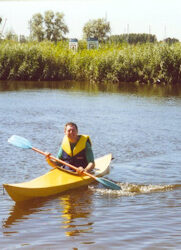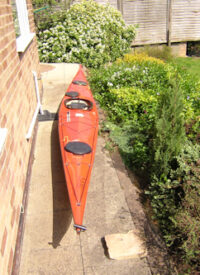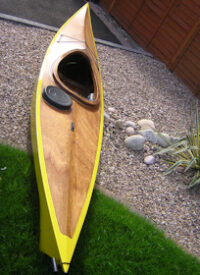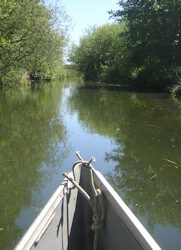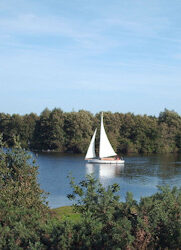Many different plans are available and the choice is entirely for the builder, I have included some of the plans’ sites on my links page.
Kayak Styles:
There are many styles to choose from, selecting the correct one depends on use, experience and dimensions of the paddler.
Sea kayaks:
Are very fast boats that have a length of at least 16ft and usually have a relatively narrow beam to enable them to have good secondary stability in rough seas. Many sea kayaks are made using fibreglass mouldings, enabling fine, smooth hull for for excellent sea-keeping.
River and Lake boats can shorter and wider and there are many different plastic boats that are used for white water and other specialist tasks. Plastic boats are moulded from materials like polypropylene using mass production methods and are not for home construction.
Wooden Kayak Types.
“Strip built”:
This type gives the finest hull with great strength and good shape with usually a rounded hull form (round bilge). They look beautiful when fished and can be inlaid with different coloured woods then varnished to show the grain. They are built on a wooden former from strips of cedar typically 20mm wide and 6mm thick with each strip being glued to the next. Tapering and shaping of the strips is needed around the bow and the stern and the former is removed after final assembly. The hull is made very strong by covering with glass cloth coated with epoxy resin. Although this method makes fine and beautiful boats, it is a time-consuming process and can treble the time needed to construct a hull compared with the stitch and glue method. I did not have that much time! If you want to know more about these superb boats then look on the Guillemot Kayaks web pages for lots of information at www.guillemot-kayaks.com.
“Stitch and Glue”:
This a much simpler form of construction in which plywood panels are bent and stitched with corrosion proof wire then reinforced with strips of glass tape and epoxy resin. Because flat panels are used the hull has a more “boxy” appearance (hard chine), but this does not make it any less seaworthy and the hull can still be fast and stable. I chose a kayak made by this method because it gives a relatively quick construction time. It took about 8 weeks working most evenings and parts of weekends to complete the job.
About the plans pack:
The first exciting bit is when the plans arrive (very promptly) by post. There is usually a general arrangement sheet showing how everything fits together, a sheet giving the offset details of the panels and their lay-out on the plywood sheet, some full size frame drawings and full size details of the bow and stern panel sections. Other plans may include full size paper patterns for many of the parts, this reduces the amount of setting out needed when marking the plywood.
Go to First Stages to start building!


